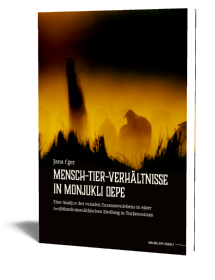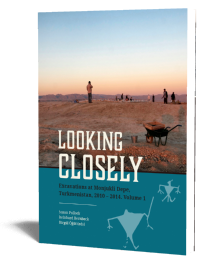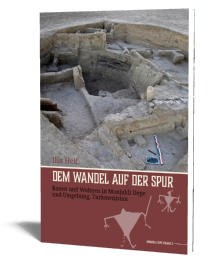Village Life at Prehistoric Monjukli Depe, Turkmenistan
Microarchaeological, Archaeobiological, and Artifact Studies
Edited by Susan Pollock, Reinhard Bernbeck & Ilia Heit | Forthcoming
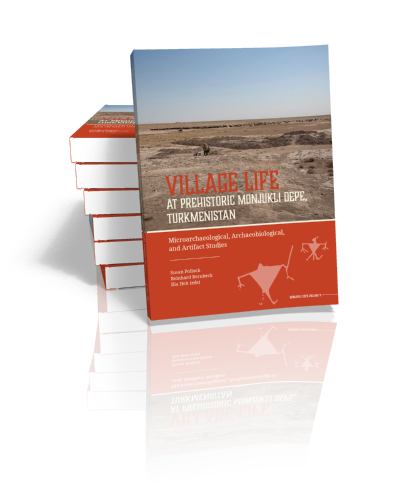
Village Life at Prehistoric Monjukli Depe, Turkmenistan
Microarchaeological, Archaeobiological, and Artifact Studies
Edited by Susan Pollock, Reinhard Bernbeck & Ilia Heit | Forthcoming
Paperback ISBN: 9789464263701 | Hardback ISBN: 9789464263718 | Imprint: Sidestone Press | Format: 210x280mm | ca. 340 pp. | Language: English | 59 illus. (bw) | 109 illus. (fc) | Keywords: microarchaeology; quotidian practices; Aeneolithic; Neolithic; human-animal relations; plants and people; phytoliths; spherulites; food preparation; bodily ornamentation; lithics; copper objects; bone tools; beads | download cover | DOI: 10.59641/e5h1b2c3d4 | CC-license: CC BY-NC-ND 4.0
Publication date: 29-10-2025
-
Digital & Online access
Digital/Online version not (yet) available
-
Buy via Sidestone (EU & UK)
Get €5.00 discount on forthcoming books by using coupon code "PRE-ORDER" in your shopping cart!
-
Buy via our Distributors (WORLD)
For non-EU or UK destinations you can buy our books via our international distributors. Although prices may vary this will ensure speedy delivery and reduction in shipping costs or import tax. But you can also order with us directly via the module above.
For UK & other International destinations
For USA/Canada & other International destinations
-
Bookinfo
Paperback ISBN: 9789464263701 | Hardback ISBN: 9789464263718 | Imprint: Sidestone Press | Format: 210x280mm | ca. 340 pp. | Language: English | 59 illus. (bw) | 109 illus. (fc) | Keywords: microarchaeology; quotidian practices; Aeneolithic; Neolithic; human-animal relations; plants and people; phytoliths; spherulites; food preparation; bodily ornamentation; lithics; copper objects; bone tools; beads | download cover | DOI: 10.59641/e5h1b2c3d4 | CC-license: CC BY-NC-ND 4.0
Publication date: 29-10-2025
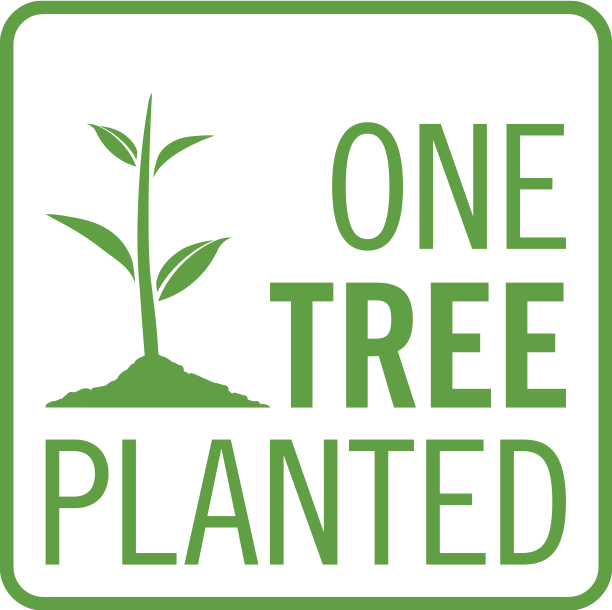
We will plant a tree for each order containing a paperback or hardback book via OneTreePlanted.org.
Archaeological research on early villages has repeatedly shown that despite their small size these settlements were anything but simple. Excavations at the Late Neolithic and early Aeneolithic village of Monjukli Depe in the Kopet Dag foothills of Turkmenistan contribute to a picture of this complexity. General uniformities in house plans and material culture conceal underlying variability in material and social practices. Small-scale analyses of the preparation and use of space in buildings, courtyards, and outdoor areas yield insights into how and where village residents pursued their daily activities. Studies focused on interactions among villagers, animals, and plants demonstrate the multiple relationships between them in this settlement. Animals were sometimes penned in buildings or courtyards, and their dung served as a source of fuel. Macrobotanical and phytolith analyses offer indications of the main crops grown as well as the plant parts that people and animals brought, intentionally or not, into the village. They underscore long-term continuities as well as changes in the relationships among plants, animals, and people between the Neolithic and Aeneolithic occupations. A series of studies examine the stone, bone, and copper tools made and used by the villagers. Items of bodily adornment, including beads and copper pins, add a distinctly personal layer of life.
Together, the assembled evidence offers a rich source of information on production activities but also on practices and materials that are otherwise largely invisible to the naked eye, from the adornment of the body, to the working of leather, fibers, and fabrics, to the harvesting of grain, to food preparation. Indirect connections to worlds beyond the village and the region are revealed via raw materials and objects from distant sources, including cherts and chalcedony, marine shells, lapis lazuli, and copper.
The resulting picture extends and refines our knowledge about this ancient village, making visible the dynamics of quotidian village life beyond larger-scale similarities.
List of Figures
List of Tables
1. Introduction: Everyday Life in Neolithic and Aeneolithic Monjukli Depe
Susan Pollock, Reinhard Bernbeck, and Ilia Heit
Part I. Microarchaeology
2. The Spatial Dimension of Daily Practices: Microdebris Analysis at Monjukli Depe
Nolwen Rol, Reinhard Bernbeck, and Peter Sturm
3. Invisible to the Eye – Comparative Multi-elemental Analyses of Archaeological Samples from Monjukli Depe
Michael Rummel, Julia Schönicke, and Ilia Heit
4. All the Small Things: Microstratigraphic Investigations of Earthen Deposits at the Site of Monjukli Depe
Susanna Cereda
Part II. Paleobiological remains
5. Burn It: Preliminary Study of the Archaeobotanical Remains Associated with Fire Installations at Monjukli Depe
Madelynn von Baeyer
6. Phytoliths from Neolithic and Aeneolithic Monjukli Depe
Philippa Ryan
7. Animal Dung and Plant Remains in the Middle of the Village
Birgül Öğüt
Part III. Objects
8. From Cores to Tools: The Chipped Stone Assemblage from Monjukli Depe
Susan Pollock
9. A Functional Study of Lithic Tools from Monjukli Depe
Melody Pope
10. Making the Most of Animals: The Worked Animal Bone Assemblage from Monjukli Depe
Jana Eger
11. On Pins and Awls: A Chaîne Opératoire Approach to Early Copper Use in Monjukli Depe
Lisa Wolff-Heger
12. The Tiny and the Tiniest ‒ Beads at Monjukli Depe
Ezel Güneş
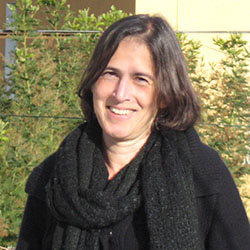
Prof. dr. Susan Pollock
Susan Pollock held positions as professor of Western Asian Archaeology at the Freie Universität Berlin and professor of Anthropology at Binghamton University. She has long-standing research interests in village, early state, and urban societies in Western Asia and has conducted fieldwork in Iraq, Iran, Turkey, and Turkmenistan. She also researches more recent periods and has worked on sites of the 20th century in and around Berlin. Her research draws on feminist and political economic approaches to the study of the past, with specific attention to processes of subjectivation and the place of commensality in social life.
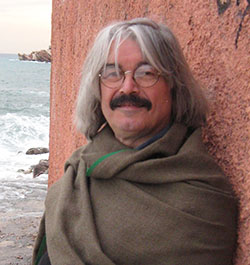
Prof. dr. Reinhard Bernbeck
Reinhard Bernbeck is Professor i.R. of Western Asian archaeology at the Freie Universität Berlin and professor emeritus of Anthropology at Binghamton University. His interests include the prehistory of Iran, archaeological manifestations of repression, exploitation and suffering, and ideological dimensions of archaeological practice. He has carried out fieldwork in Iran, Iraq, Syria, Jordan, Turkey, and Turkmenistan. He has also investigated several prisoner-of-war and forced labor camps from the 20th century in Germany.
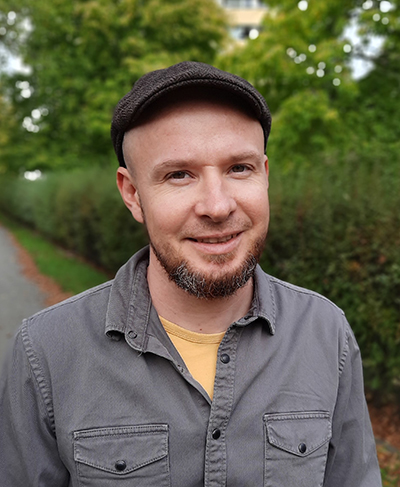
Dr. Ilia Heit
Ilia Heit studied Prehistoric Archaeology, Geology, and Slavic Philology at the Johannes Gutenberg University Mainz, Germany and received his PhD in Near Eastern Archaeology at the Freie Universität Berlin. His current research focuses on Neolithic and Chalcolithic communities in Central Asia and South Caucasus as well as theories and methods of Soviet archaeology. He is author of Dem Wandel auf der Spur. Bauen und Wohnen in Monjukli Depe und Umgebung, Turkmenistan.
Abstract:
Archaeological research on early villages has repeatedly shown that despite their small size these settlements were anything but simple. Excavations at the Late Neolithic and early Aeneolithic village of Monjukli Depe in the Kopet Dag foothills of Turkmenistan contribute to a picture of this complexity. General uniformities in house plans and material culture conceal underlying variability in material and social practices. Small-scale analyses of the preparation and use of space in buildings, courtyards, and outdoor areas yield insights into how and where village residents pursued their daily activities. Studies focused on interactions among villagers, animals, and plants demonstrate the multiple relationships between them in this settlement. Animals were sometimes penned in buildings or courtyards, and their dung served as a source of fuel. Macrobotanical and phytolith analyses offer indications of the main crops grown as well as the plant parts that people and animals brought, intentionally or not, into the village. They underscore long-term continuities as well as changes in the relationships among plants, animals, and people between the Neolithic and Aeneolithic occupations. A series of studies examine the stone, bone, and copper tools made and used by the villagers. Items of bodily adornment, including beads and copper pins, add a distinctly personal layer of life.
Together, the assembled evidence offers a rich source of information on production activities but also on practices and materials that are otherwise largely invisible to the naked eye, from the adornment of the body, to the working of leather, fibers, and fabrics, to the harvesting of grain, to food preparation. Indirect connections to worlds beyond the village and the region are revealed via raw materials and objects from distant sources, including cherts and chalcedony, marine shells, lapis lazuli, and copper.
The resulting picture extends and refines our knowledge about this ancient village, making visible the dynamics of quotidian village life beyond larger-scale similarities.
Contents
List of Figures
List of Tables
1. Introduction: Everyday Life in Neolithic and Aeneolithic Monjukli Depe
Susan Pollock, Reinhard Bernbeck, and Ilia Heit
Part I. Microarchaeology
2. The Spatial Dimension of Daily Practices: Microdebris Analysis at Monjukli Depe
Nolwen Rol, Reinhard Bernbeck, and Peter Sturm
3. Invisible to the Eye – Comparative Multi-elemental Analyses of Archaeological Samples from Monjukli Depe
Michael Rummel, Julia Schönicke, and Ilia Heit
4. All the Small Things: Microstratigraphic Investigations of Earthen Deposits at the Site of Monjukli Depe
Susanna Cereda
Part II. Paleobiological remains
5. Burn It: Preliminary Study of the Archaeobotanical Remains Associated with Fire Installations at Monjukli Depe
Madelynn von Baeyer
6. Phytoliths from Neolithic and Aeneolithic Monjukli Depe
Philippa Ryan
7. Animal Dung and Plant Remains in the Middle of the Village
Birgül Öğüt
Part III. Objects
8. From Cores to Tools: The Chipped Stone Assemblage from Monjukli Depe
Susan Pollock
9. A Functional Study of Lithic Tools from Monjukli Depe
Melody Pope
10. Making the Most of Animals: The Worked Animal Bone Assemblage from Monjukli Depe
Jana Eger
11. On Pins and Awls: A Chaîne Opératoire Approach to Early Copper Use in Monjukli Depe
Lisa Wolff-Heger
12. The Tiny and the Tiniest ‒ Beads at Monjukli Depe
Ezel Güneş

Prof. dr. Susan Pollock
Susan Pollock held positions as professor of Western Asian Archaeology at the Freie Universität Berlin and professor of Anthropology at Binghamton University. She has long-standing research interests in village, early state, and urban societies in Western Asia and has conducted fieldwork in Iraq, Iran, Turkey, and Turkmenistan. She also researches more recent periods and has worked on sites of the 20th century in and around Berlin. Her research draws on feminist and political economic approaches to the study of the past, with specific attention to processes of subjectivation and the place of commensality in social life.

Prof. dr. Reinhard Bernbeck
Reinhard Bernbeck is Professor i.R. of Western Asian archaeology at the Freie Universität Berlin and professor emeritus of Anthropology at Binghamton University. His interests include the prehistory of Iran, archaeological manifestations of repression, exploitation and suffering, and ideological dimensions of archaeological practice. He has carried out fieldwork in Iran, Iraq, Syria, Jordan, Turkey, and Turkmenistan. He has also investigated several prisoner-of-war and forced labor camps from the 20th century in Germany.

Dr. Ilia Heit
Ilia Heit studied Prehistoric Archaeology, Geology, and Slavic Philology at the Johannes Gutenberg University Mainz, Germany and received his PhD in Near Eastern Archaeology at the Freie Universität Berlin. His current research focuses on Neolithic and Chalcolithic communities in Central Asia and South Caucasus as well as theories and methods of Soviet archaeology. He is author of Dem Wandel auf der Spur. Bauen und Wohnen in Monjukli Depe und Umgebung, Turkmenistan.
-
Digital & Online access
Digital/Online version not (yet) available
-
Buy via Sidestone (EU & UK)
Get €5.00 discount on forthcoming books by using coupon code "PRE-ORDER" in your shopping cart!
-
Buy via our Distributors (WORLD)
For non-EU or UK destinations you can buy our books via our international distributors. Although prices may vary this will ensure speedy delivery and reduction in shipping costs or import tax. But you can also order with us directly via the module above.
For UK & other International destinations
For USA/Canada & other International destinations
- Browse all books by subject
-
Search all books

We will plant a tree for each order containing a paperback or hardback book via OneTreePlanted.org.
You might also like:
© 2025 Sidestone Press KvK nr. 28114891 Privacy policy Sidestone Newsletter Terms and Conditions (Dutch)
